From the serene shores of Jūrmala to the rugged beauty of Liepāja, the best beaches in Latvia are just waiting to be explored. With its Baltic coastline adorned by picturesque sandy stretches and enchanting dunes, this fascinating country is a great choice for travellers seeking a different kind of coastal adventure.
Why should you choose Latvia for your next beach holiday?
Latvia, on the eastern shore of the Baltic Sea – sandwiched between its fellow Baltic States Estonia and Lithuania – is a great choice for travellers seeking an alternative to the overcrowded Med.
Latvia’s coast stretches for 500km, around 200km of this along the shores of the Baltic Sea, with the other 300km lining the Gulf of Rīga, a large bay partially separated from the rest of the Baltic by the Estonian island of Saaremaa.
Almost half of this coastline is characterised by glorious sandy beaches, typically backed by lines of dunes. In the Gulf of Rīga, waters remain shallow for a considerable distance offshore, making the area a particularly good choice for beach vacations with young children. And best of all, the density of fellow sunbathers is a fraction of that in the Mediterranean.
With the effects of global warming generating a growing body of news articles warning that traditional summer holiday destinations in the Mediterranean may simply become too hot to host beach vacations in July and August, interest in the beaches of northern Europe is on the rise.
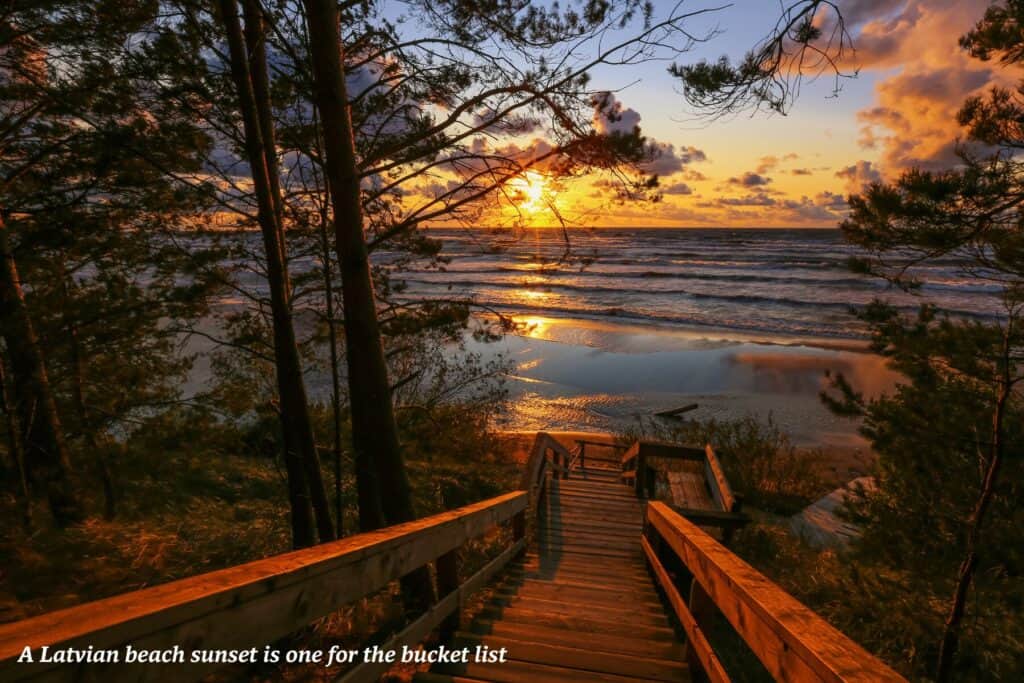
Latvia’s beach credentials
Beaches are free for everyone’s use, not parcelled into private plots that charge exorbitant sums for the use of a lounger. Plus, on Latvian beaches you will be untroubled by hawkers trying to sell you coconut water, foot massages or diluted cocktails.
The sunbathing season in Latvia is of course rather shorter than that of destinations further south, but during the summer months of June to August the mean daily maximum temperature sits above 20°C in the capital, with temperatures above 30°C not uncommon. And this far north, summer brings the added benefit of long days and sunlit evenings.
For more information about when to travel, and what you need to know before you book, see the Latvia travel advice on the GOV.UK website.
The best beaches in Latvia
With so many beaches to choose from, it can be difficult to know where to focus your attention. Let us take you through the options.
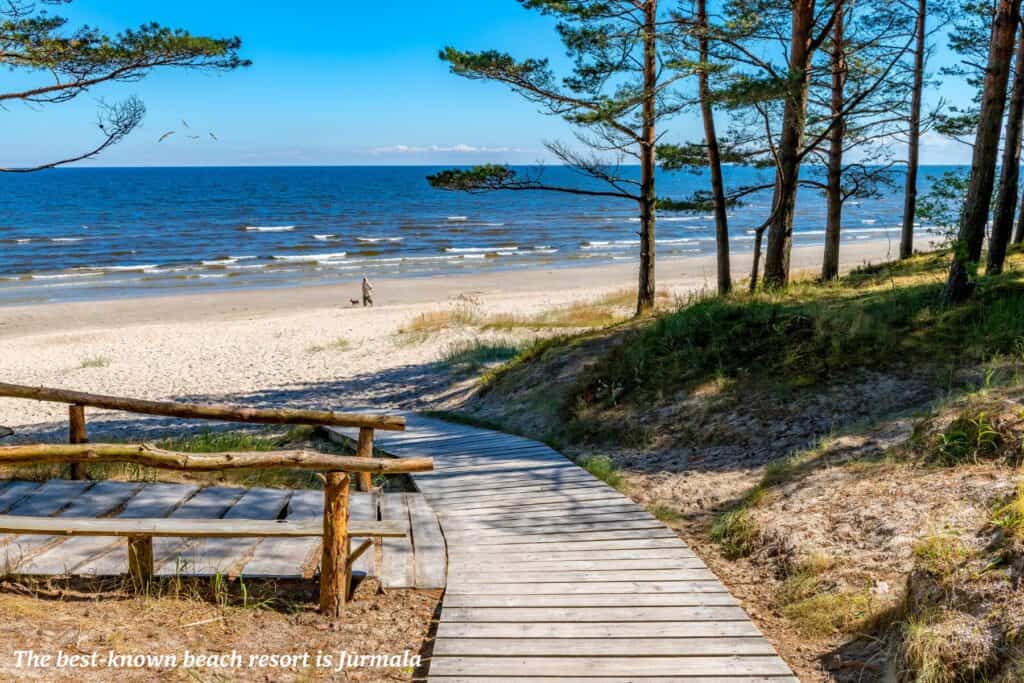
Jūrmala
The best-known beach resort is Jūrmala. Lying to the west of Rīga, at the southern end of the Gulf, this popular spot offers more than 30km of white sand.
Developed in the late eighteenth century from a string of fishing villages scattered along the coast, Jūrmala was originally a bathing resort for the nobility of the Tsarist Empire. Growth at the turn of the twentieth century coincided with a fascination with the Art Nouveau style across Europe, resulting in an attractive townscape of wooden villas enlivened by such flourishes as corner towers and delicate lattice work. You can read more about Art Nouveau architecture in Latvia here.
Today, Jūrmala offers a wide range of accommodation and dining options. It hosts large hotel complexes like the Baltic Beach Hotel and Lielupe Hotel, centred around spas that boast an extensive menu of treatments.
The credentials of Jūrmala as a spa destination are strong, owing to the raised bogs found around the settlement of Ķemeri at the western end of the resort. These are the source of sulphurous mineral waters that burst out from the peat in more than 30 springs. Ķemeri developed separately as the spa resort of Bad Kemmern, founded in 1838, before later being subsumed into Jūrmala.
If you need a break from the sea and sand, the Great Ķemeri Bog Boardwalk in the national park outside of town offers a dry walk along wooden planking over one of the largest raised bogs in Latvia. It is a beautiful place, covered in pools, waterlogged mossy areas, and drier patches with heather and dwarf pine. It is a breeding habitat for such birds as the European golden plover and wood sandpiper.
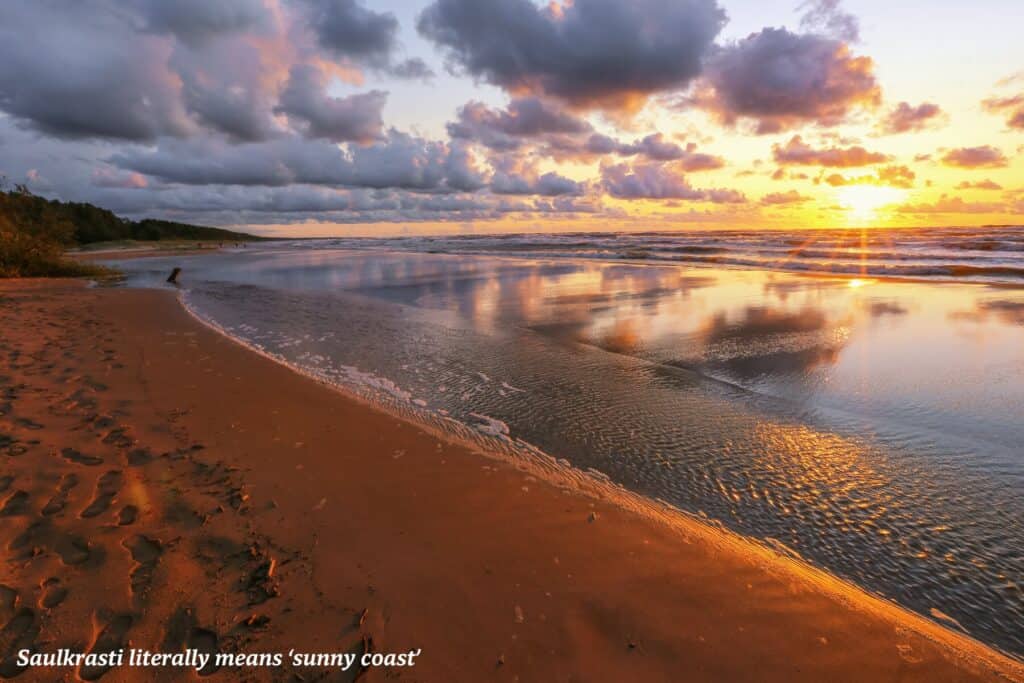
Saulkrasti
While Jūrmala is far quieter than most Mediterranean beach resorts, it is still a sizeable settlement of some 50,000 inhabitants, and those looking to get further from what passes in Latvia for crowds may wish to head north along the Gulf of Rīga from the capital.
The town of Saulkrasti literally means ‘sunny coast’, and it has some features in common with Jūrmala, as an elongated coastal settlement developed out of a line of former fishing villages. It offers a pleasant sandy beach, backed by a line of dunes covered by pine forest. The largest of these, the White Dune, is 18m high, and offers a fine view of the mouth of the Inčupe River as it crosses the beach below.
Russian Empress Catherine the Great visited the place in 1764, planting some linden trees as a lasting reminder of her trip. Saulkrasti is much less developed than Jūrmala, with little beach infrastructure beyond some changing cubicles. The locals like it that way.
Love a beach getway but don’t want to leave your four-legged friend behind? Check out our guide to the best dog-friendly beaches in Britain.
North of Saulkrasti
The Gulf of Rīga coast north of Saulkrasti is full of great stretches of sand. Good choices include Tūja Beach, which is located just 30km north of Saulkrasti.
Kuiviži harbour (north of the small maritime town of Salacgrīva) is home to the Kapteiņu Osta resort, a unique place that combines a hotel, a camping and caravan park, and wooden cottages named after famous sea captains.
Running almost to the Estonian border, Ainaži beach is backed by a sleepy small town which played a surprisingly important role in Latvia’s naval and shipbuilding history, including as the location for the naval school opened in 1864 at the initiative of writer and politician Krišjānis Valdemārs. The story of the school is well told in the museum occupying its restored original building.
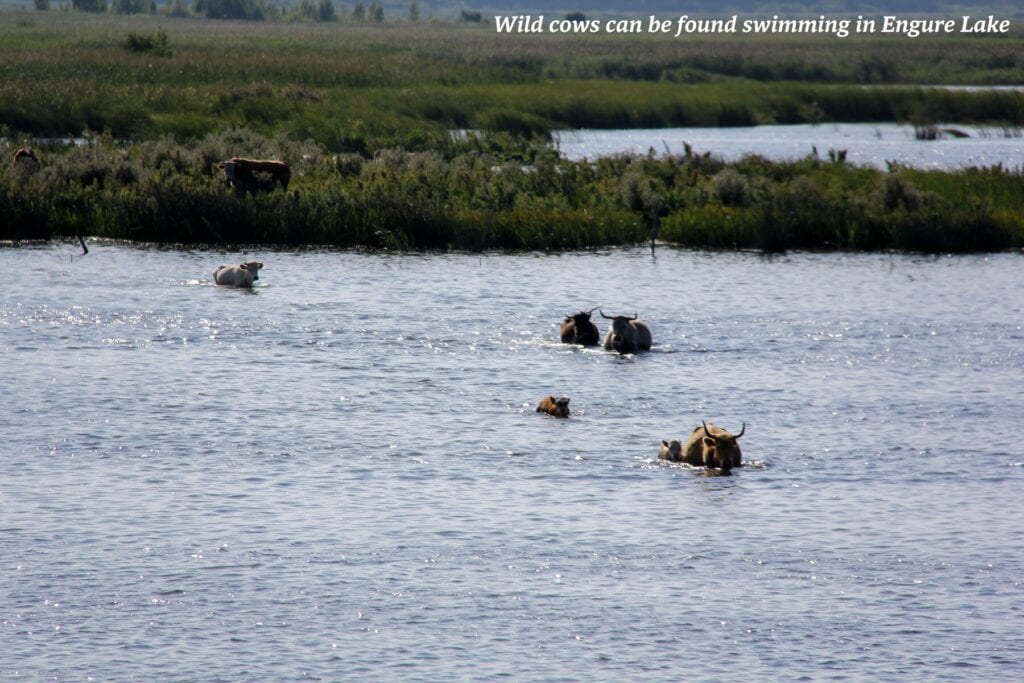
West of Rīga
Another collection of the best beaches in Latvia is to be found on the Gulf of Rīga coast, located just west of the capital city and beyond Jūrmala. These include Engure beach, a picturesque spot that is backed by dunes.
Just inland, Lake Engure is a former coastal lagoon and the third largest lake in Latvia. Shallow and full of reeds, it is a great spot for birdwatching. Wild cattle and horses have been introduced in an attempt to restore lakeside meadows, which were a victim of a decline in cattle farming and hay cutting.
Further north, family-friendly Melnsils offers a beachside complex combining a campsite with all manner of structures converted into accommodation, including large wooden barrels, former military bunkers and an old motorboat.
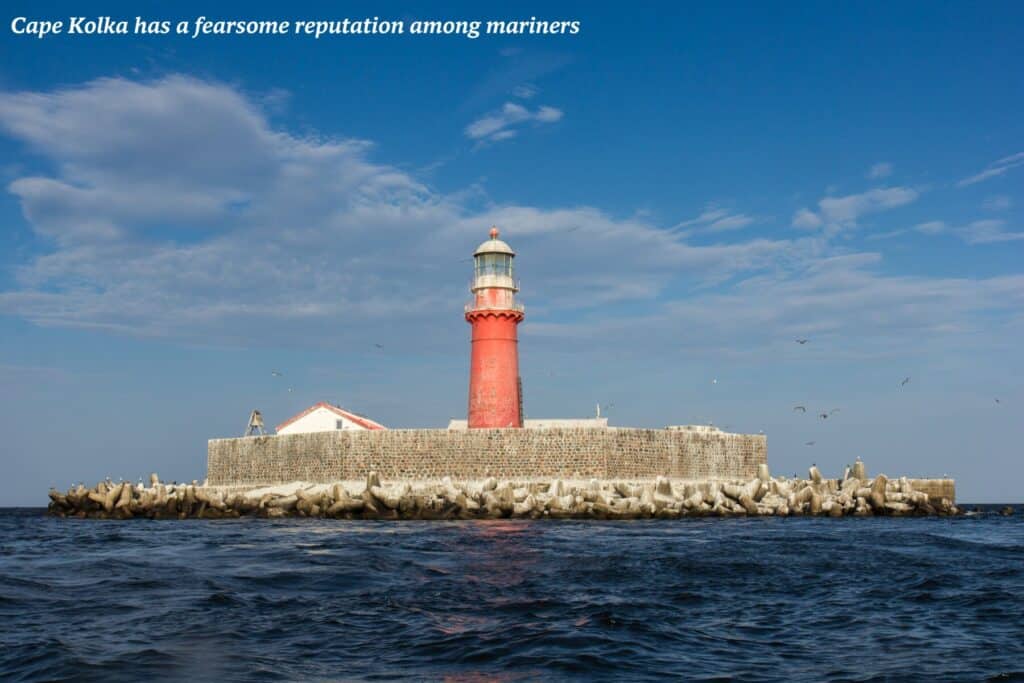
Cape Kolka
The curving shoreline of the Gulf of Rīga meets the Baltic Sea at Cape Kolka. The place has a fearsome reputation among mariners, though come here in good weather and you will find a much more welcoming scene, as two sandy beaches, each backed by forest, come gently to a point.
Some 6km out to sea, the modern Kolka Lighthouse sits on an artificial island built in the 1870s, and now holds the title of Latvia’s only sea island. While strong currents mean that this scenic spot is not designed for swimming, there are plenty of other things to do. It is a great place for birdwatching, especially during the spring and autumn migrations, and you can also take the Pine Trail across forested dunes.
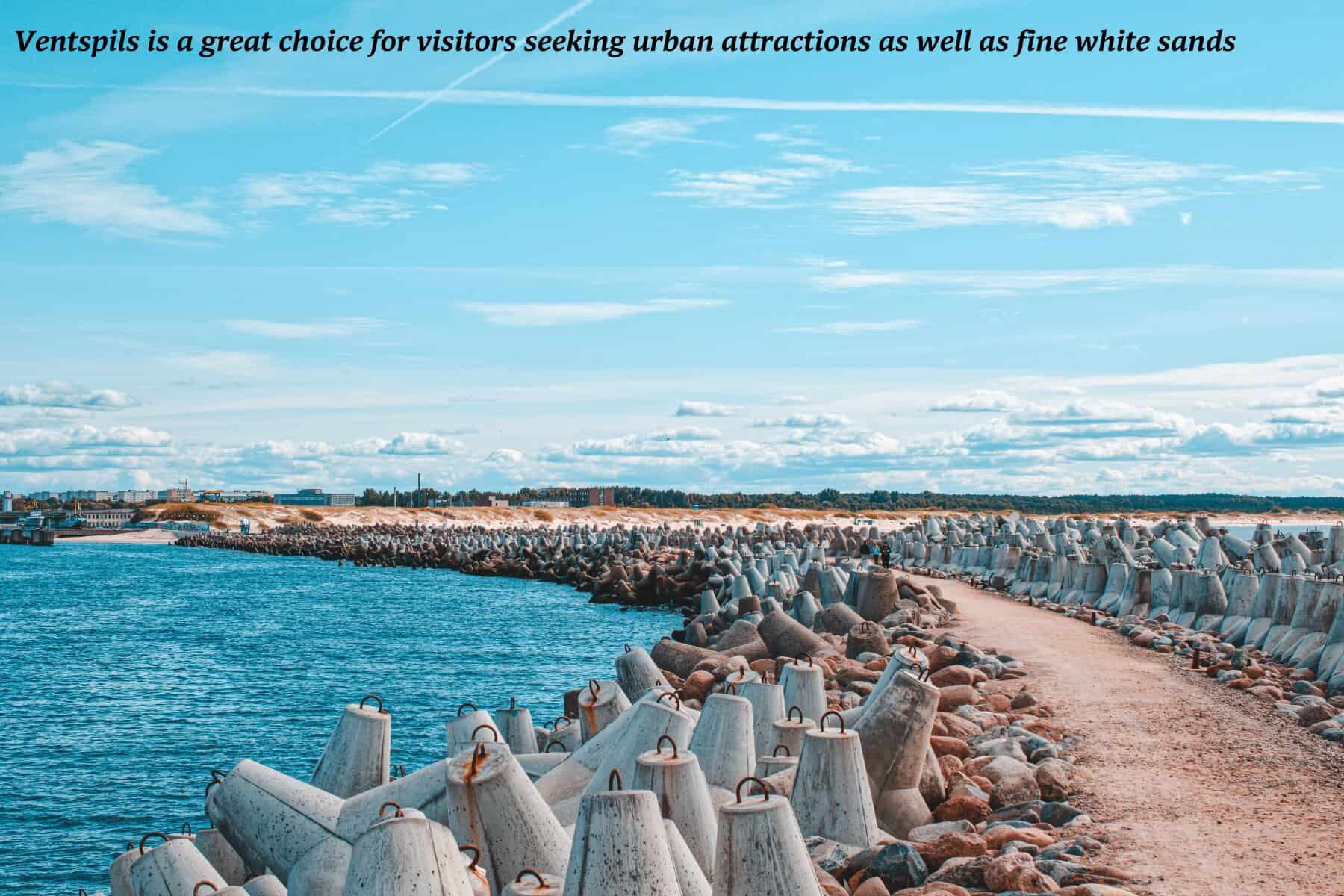
Liepāja and Ventspils
The Baltic coast in the west of the country is also host to some amazing beaches. The two main maritime cities along this stretch of coast, Liepāja and Ventspils, both offer tempting combinations of fine white sands and an interesting range of urban attractions.
Liepāja, preparing for a year as European City of Culture in 2027, is a particularly strong choice. It’s home to great hotels and restaurants, the Great Amber Concert Hall (home to the Liepāja Symphony Orchestra) and a varied range of attractions, from the house at which Peter the Great stayed during his visit in 1697 to a former Soviet prison in which the brave can opt to spend the night. The three-kilometer Seaside Park, one of the largest wooded parks in Latvia, and the Blue Flag beach, are the pride of Liepāja.
The Summer Sound Festival, held on the beach at the beginning of August, attracts a mix of international and Latvian performers for one of the largest music festivals in the Baltics.
Alongside another great sandy beach, the places to head for in Ventspils include the child-oriented and highly interactive VIZIUM Science Centre and the Seaside Open-Air Museum, housing a collection of historic wooden buildings as well as a charming narrow-gauge railway. The city is also home to a large collection of painted cow sculptures.
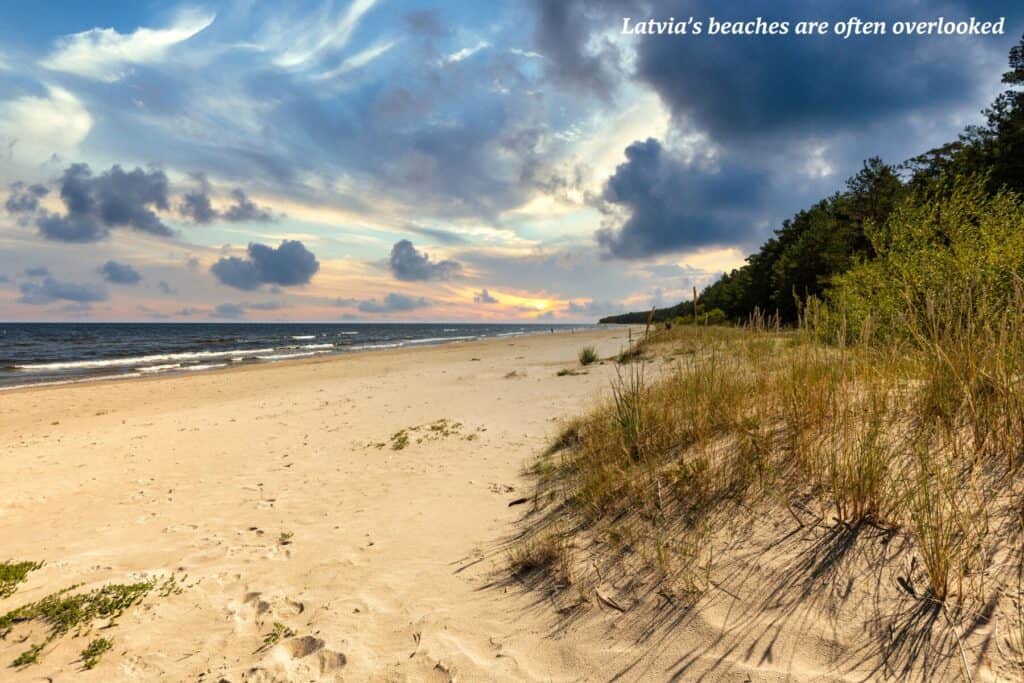
How to visit the best beaches in Latvia
Latvia’s beach holiday season spans the summer months between the end of May and early September, with July and August being the warmest months. Wet and cool spells are possible even during the summer, when Latvia’s historic towns come into their own.
The Midsummer festival on 23 and 24 June shows Latvians at their most exuberant, when they wear floral crowns and sing folk songs round the campfire into the night. This is a great time to travel to Latvia if you’re after a cultural experience alongside your relaxation.
Rīga is well connected by air with major cities across Europe. Air Baltic, British Airways and Ryanair all offer direct flights from the UK. A taxi direct to Jūrmala from Rīga airport takes around 25 minutes. Jūrmala and Saulkrasti are connected by frequent and cheap trains to Rīga, and there are also bus connections from Rīga to most of the beach resorts mentioned here.
If you want to explore wilder and less well-known beaches, and this is one of the joys of the country, renting a car on arrival at Rīga Airport is a good option.
More information
For more information, see our upcoming guide to Latvia or head to Latvia’s official tourism portal for an extensive database of tourist attractions, accommodation, events and other tourism-related content.
The Tourism Department of Investment and Development Agency of Latvia (LIAA) is the national tourism board. Check out their website and explore a land where ancient traditions meet modern wonders, and where every corner tells a story waiting to be discovered.
